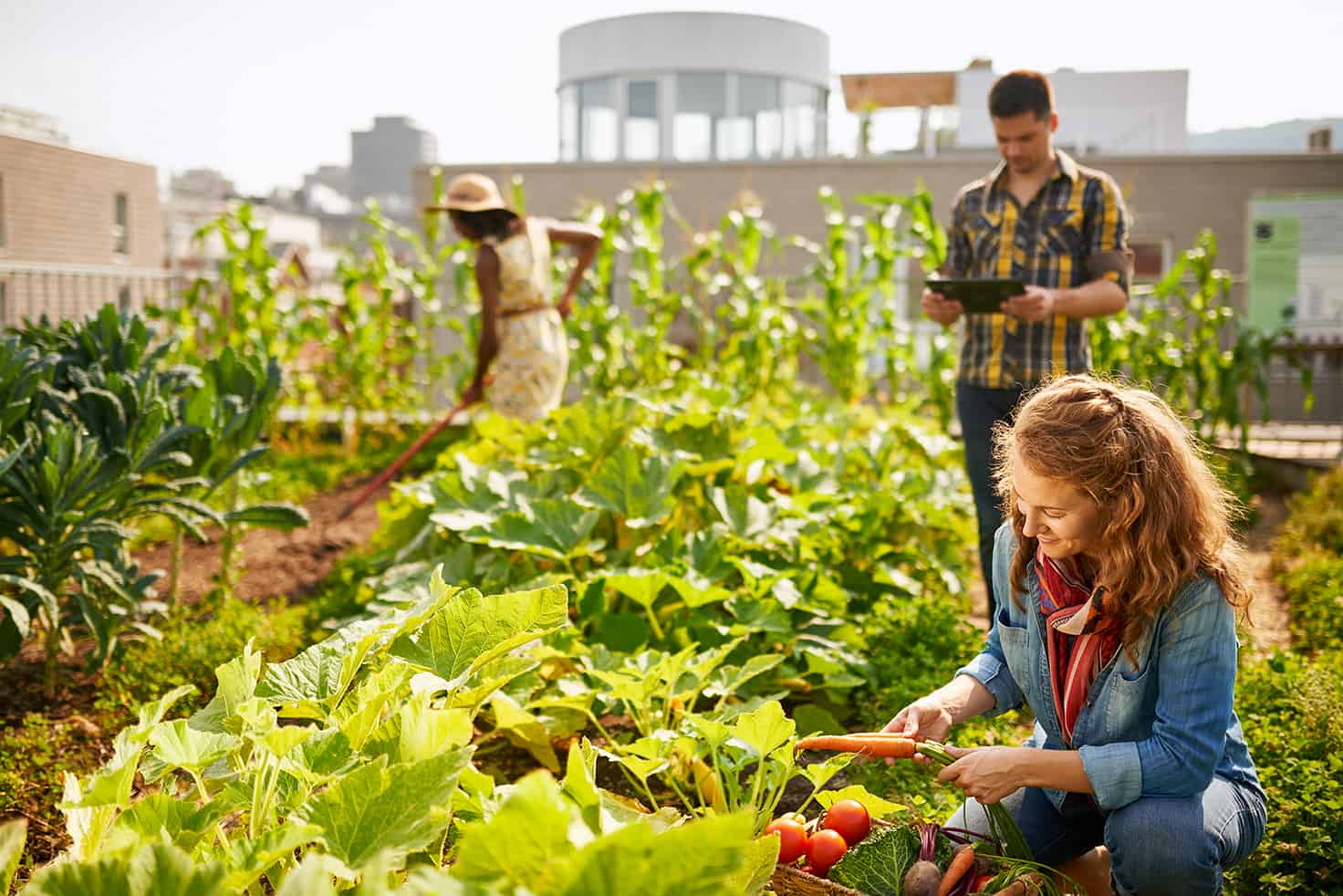
How will Île-de-France look in 2050 ?
5 minutes of reading
Imagine it is 2050 in Ile-de-France. The effects of environmental disturbances and the reduction of energy resources have led to a profound transformation in the organisation of the region and life as it unfolds there. Half as many residents, virtually no automobiles, which have given way to low-tech transportation…plus local solidarity initiatives, breathable air and stronger ties to nature and biological rhythms. That is the revolutionary scenario described by Institut Momentum, a think tank specialising in degrowth, in its report Bioregions 2050.

This in-depth exercise in forward thinking paints a picture of Ile-de France reorganised around local living environments, bioregions: areas defined by geographic rather than political boundaries and which account for human communities and ecosystems.
A car-free region?
After two years of work, the report was published in March 2019 with 244 pages that compel readers to envision themselves in this potential future that is not so far away. In response to a commission from Forum Vies Mobiles (a think tank funded by SNCF) to imagine a car-free region by 2050, the authors work under the hypothesis that decreases in transport and liberation from our dependence on oil are the prerequisites for a bioregional scenario to take hold and to enable us to absorb the inevitable changes to come (the consequences of climate change, depletion of resources) under good conditions for our human societies.A restricted, but desirable future
That is definitely one of the key takeaways from the report: far from revealing a cataclysmic vision, the authors show how a profound, planned transformation can lead to both more tranquil lifestyles and enhanced regional resilience in the face of crises. Under such conditions, the Ile-de-France of 2050 would be a “region with high quality of life, reconnected to slower rhythms, nearly self-sufficient in terms of energy and food supply and free from the nuisances of fossil-driven energy”: a narrative of positive imagined outcomes that shows a future of constraint and austerity can also be desirable.5 pillars for a resilient territory
In concrete terms, this territorial organisation is redefined around 8 bioregions. Paris comes under 5 bioregions (Plaine de France, Vexin, Brie, Gâtinais, Hurepoix), while the 3 others (Mantois, Brie champenoise, Beauce) maintain more distant relations with the capital city. This organisation is founded on a mass urban exodus that halves the population and overturns the geographic distribution of Ile-de-France inhabitants: the region’s rural territories receive 700,000 additional residents while the population is reduced by half in the dense urbanised zone and is reduced by two-thirds in the capital. Energy consumption comes entirely from renewable sources and is greatly diminished because of the intermittency of such sources. The priorities for energy use are the mobility of people and goods and temperature comfort; the energy supply is supplemented by a local power generation network. In the winter, working hours will be shortened to adapt to the drop in supply and to follow natural biological rhythms. The failure of the Greater Paris Metropolis triggers a process of decomplexification. The bioregions are led by strong local democracies and participatory civic movements, while the influence of national, European and international interests becomes secondary. Through the development of a work animal culture (horses, donkeys, mules, etc.), the rehabilitation of secondary railroad lines, and the reinforcement of pedestrian connections (towpaths, footpaths, trails, etc.), the primary modes of transport are low-tech (walking, bicycle, draught animal). Nevertheless, rail infrastructure (tramways and trains) ensure intraregional exchange and solidarity, while working within the energy constraints. Shared vehicles on the road are powered mainly by biogas in rural areas and by electricity in Paris and its immediate suburbs. Their number is highly limited (90,000 units compared to 5 million vehicles on the road today) and reserved for priority usage (emergency, etc.). The agricultural potential of Ile-de-France is central to the bioregional project. Nearly half the population (3 million people) take part in organic agri-food activities (as professionals or amateurs) in Ile-de-France, which becomes self-sufficient. The massive creation of jobs in the agricultural sector comes at the expense of the market services sector (info-communication, publicity/adverts, finance, tourism, etc.), but occupations in fine arts, performing arts and leisure activities remain. The food-producing belt around Paris is gradually restored as the train stations of Paris become food exchanges where the bioregional output is bought and sold.Dispensing with food and energy dependency
For the authors, this austere, but sustainable, scenario can only come about with the abolishment of the massive dependencies that deepen territorial vulnerabilities. In terms of food, the region now produces only 10% of what it consumes, while its energy use is 20 times greater than its power generation. Plus, it is totally depending on fossil-fired energy, which accounts for 96% of the transport of people and goods. If there is any hope of smoothly navigating the changes that await us, the authors advocate for profound transformations in our territorial growth models, which are summarised in the form of recommendations on energy (progressively reduce energy availability per capita and develop a local power generation network), on mobility (reduce trips, expansion of animal traction and secondary rail lines), on the economy (more local exchanges, management of common resources by the persons directly concerned, promotion of manual and low-tech occupations), on food (massive increase in agricultural jobs and in usable farm area), and on biodiversity (urban agricultural parks in the place of city access points).More reading
Read also




What lies ahead? 7 megatrends and their influence on construction, real estate and urban development
Article
20 minutes of reading

